
How to come up with an effective and manageable research paper topic.
- Subject:
- Business and Communication
- Communication
- Material Type:
- Lesson
- Provider:
- State University of New York
- Date Added:
- 09/27/2023

How to come up with an effective and manageable research paper topic.
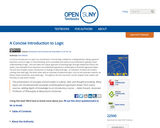
A Concise Introduction to Logic is an introduction to formal logic suitable for undergraduates taking a general education course in logic or critical thinking, and is accessible and useful to any interested in gaining a basic understanding of logic. This text takes the unique approach of teaching logic through intellectual history; the author uses examples from important and celebrated arguments in philosophy to illustrate logical principles. The text also includes a basic introduction to findings of advanced logic. As indicators of where the student could go next with logic, the book closes with an overview of advanced topics, such as the axiomatic method, set theory, Peano arithmetic, and modal logic. Throughout, the text uses brief, concise chapters that readers will find easy to read and to review.
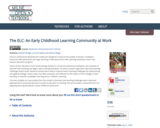
The ELC professional development model was designed to improve the quality of teacher candidates’ Practicum field placements and align teaching in field placements with Learning Standards used in the teacher education program.
Teams of four educators from varied settings worked in a Practicum placement setting for one semester to improve their teaching and align it with Learning Standards. An action research approach improved teaching challenges teams faced. Research articles were read to improve teams’ teaching challenges by implementing one agreed strategy. Teams video-recorded, assessed, and reflected on the impact of the strategy on their teaching, on teacher candidates’ learning and on children’s learning.
This text compiles six case studies from this model to illustrate how teaching challenges were improved. Appropriate for practiced educators as well as educators in training, this text provides a real world look into applying Learning Standards in early childhood classrooms.
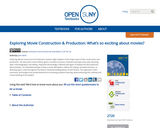
Exploring Movie Construction and Production contains eight chapters of the major areas of film construction and production. The discussion covers theme, genre, narrative structure, character portrayal, story, plot, directing style, cinematography, and editing. Important terminology is defined and types of analysis are discussed and demonstrated. An extended example of how a movie description reflects the setting, narrative structure, or directing style is used throughout the book to illustrate building blocks of each theme. This approach to film instruction and analysis has proved beneficial to increasing students’ learning, while enhancing the creativity and critical thinking of the student.
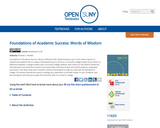
Foundations of Academic Success: Words of Wisdom (FAS: WoW) introduces you to the various aspects of student and academic life on campus and prepares you to thrive as a successful college student (since there is a difference between a college student and a successful college student). Each section of FAS: WoW is framed by self-authored, true-to-life short stories from actual State University of New York (SUNY) students, employees, and alumni. The advice they share includes a variety of techniques to help you cope with the demands of college. The lessons learned are meant to enlarge your awareness of self with respect to your academic and personal goals and assist you to gain the necessary skills to succeed in college.
Table of Contents:
Part One: YOUR Solid Foundation
The Student Experience by Kristen Mruk
Practice, Practice, Practice by Dr. Kristine Duffy
Why So Many Questions? by Fatima Rodriguez Johnson
These Are the Best Years of Your Life by Sara Vacin
With a Little Help from My Friends by Paulo Fernandes
Part Two: YOU Are the President and CEO of YOU
Can You Listen to Yourself? by Yuki Sasao
Failure Is Not an Option by Nathan Wallace
Thinking Critically and Creatively by Dr. Andrew Robert Baker
Time Is on Your Side by Christopher L. Hockey
What Do You Enjoy Studying? by Dr. Patricia Munsch
Part Three: The Future YOU
Fighting for My Future Now by Amie Bernstein
Something Was Different by Jacqueline Tiermini
Transferrable by Vicki L. Brown
It’s Like Online Dating by Jackie Vetrano
Learn What You Don’t Want by Jamie Edwards
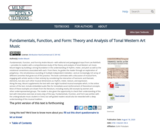
Fundamentals, Function, and Form by Andre Mount—with editorial and pedagogical input from Lee Rothfarb—provides its readers with a comprehensive study of the theory and analysis of tonal Western art music. Mount begins by building a strong foundation in the understanding of rhythm, meter, and pitch as well as the notational conventions associated with each. From there, he guides the reader through an exploration of polyphony—the simultaneous sounding of multiple independent melodies—and an increasingly rich array of different sonorites that grow out of this practice. The book culminates with a discussion of musical form, engaging with artistic works in their entirety by considering the interaction of harmonic and thematic elements, but also such other musical dimensions as rhythm, meter, texture, and expression.
Along the way, Mount supplements the text with over eight hundred musical examples which, in the online version of the text, include embedded audio files for immediate aural reinforcement of theoretical concepts. Most of these examples are drawn from the literature, including nearly 200 excerpts by women and other underrepresented groups. The reader is also given the opportunity to check their understanding of the text with interactive exercises at every step of the way. Fundamentals, Function, and Form was written with the undergraduate music student in mind, but self-guided readers would also be rewarded with a deep understanding of this musical tradition.
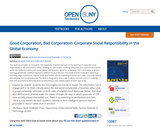
This textbook provides an innovative, internationally oriented approach to the teaching of corporate social responsibility (CSR) and business ethics. Drawing on case studies involving companies and countries around the world, the textbook explores the social, ethical, and business dynamics underlying CSR in such areas as global warming, genetically modified organisms (GMO) in food production, free trade and fair trade, anti-sweatshop and living-wage movements, organic foods and textiles, ethical marketing practices and codes, corporate speech and lobbying, and social enterprise. The book is designed to encourage students and instructors to challenge their own assumptions and prejudices by stimulating a class debate based on each case study.
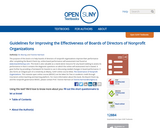
The purpose of this book is to help boards of directors of nonprofit organizations improve their performance after completing the Board Check-Up, online board performance self-assessment tool found at www.boardcheckup.com. This book is also valuable as a stand-alone resource for any board seeking to assess its performance in that it contains the diagnostic questions on which the online self-assessment tool is based. It goes further by providing a framework for boards to use in discussing needed changes in board performance. It also forms an integral part of a University at Albany, SUNY online course titled, The Governance of Nonprofit Organizations. This massive open online course (MOOC) can be taken for free or academic credit through Coursera’s online teaching and learning platform.
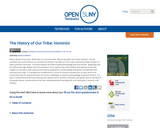
Where did we come from? What were our ancestors like? Why do we differ from other animals? How do scientists trace and construct our evolutionary history? The History of Our Tribe: Hominini provides answers to these questions and more. The book explores the field of paleoanthropology past and present. Beginning over 65 million years ago, Welker traces the evolution of our species, the environments and selective forces that shaped our ancestors, their physical and cultural adaptations, and the people and places involved with their discovery and study. It is designed as a textbook for a course on Human Evolution but can also serve as an introductory text for relevant sections of courses in Biological or General Anthropology or general interest. It is both a comprehensive technical reference for relevant terms, theories, methods, and species and an overview of the people, places, and discoveries that have imbued paleoanthropology with such fascination, romance, and mystery.
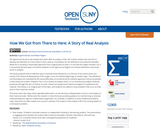
The typical introductory real analysis text starts with an analysis of the real number system and uses this to develop the definition of a limit, which is then used as a foundation for the definitions encountered thereafter. While this is certainly a reasonable approach from a logical point of view, it is not how the subject evolved, nor is it necessarily the best way to introduce students to the rigorous but highly non-intuitive definitions and proofs found in analysis.
This book proposes that an effective way to motivate these definitions is to tell one of the stories (there are many) of the historical development of the subject, from its intuitive beginnings to modern rigor. The definitions and techniques are motivated by the actual difficulties encountered by the intuitive approach and are presented in their historical context. However, this is not a history of analysis book. It is an introductory analysis textbook, presented through the lens of history. As such, it does not simply insert historical snippets to supplement the material. The history is an integral part of the topic, and students are asked to solve problems that occur as they arise in their historical context.
This book covers the major topics typically addressed in an introductory undergraduate course in real analysis in their historical order. Written with the student in mind, the book provides guidance for transforming an intuitive understanding into rigorous mathematical arguments. For example, in addition to more traditional problems, major theorems are often stated and a proof is outlined. The student is then asked to fill in the missing details as a homework problem.
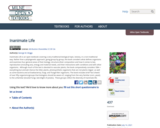
Inanimate Life is an open textbook covering a very traditional biological topic, botany, in a non-traditional way. Rather than a phylogenetic approach, going group by group, the book considers what defines organisms and examines four general areas of their biology: structure (their composition and how it comes to be), reproduction (including sex), energy and material needs, and their interactions with conditions and with other organisms. Although much of the text is devoted to vascular plants, the book comparatively considers ‘EBA = everything but animals’ (hence the title): plants, photosynthetic organisms that are not plants (‘algae’, as well as some bacteria and archaebacteria), fungi, and ‘fungal-like’ organisms. The book includes brief ‘fact sheets’ of over fifty organisms/groups that biologists should be aware of, ranging from the very familiar (corn, yeast) to the unfamiliar (bracket fungi, late-blight of potato). These groups reflect the diversity of inanimate life.
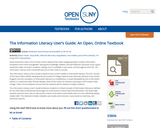
Good researchers have a host of tools at their disposal that make navigating today’s complex information ecosystem much more manageable. Gaining the knowledge, abilities, and self-reflection necessary to be a good researcher helps not only in academic settings, but is invaluable in any career, and throughout one’s life. The Information Literacy User’s Guide will start you on this route to success.The Information Literacy User’s Guide is based on two current models in information literacy: The 2011 version of The Seven Pillars Model, developed by the Society of College, National and University Libraries in the United Kingdom and the conception of information literacy as a metaliteracy, a model developed by one of this book’s authors in conjunction with Thomas Mackey, Dean of the Center for Distance Learning at SUNY Empire State College. These core foundations ensure that the material will be relevant to today’s students.The Information Literacy User’s Guide introduces students to critical concepts of information literacy as defined for the information-infused and technology-rich environment in which they find themselves. This book helps students examine their roles as information creators and sharers and enables them to more effectively deploy related skills. This textbook includes relatable case studies and scenarios, many hands-on exercises, and interactive quizzes.
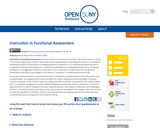
Instruction in Functional Assessment introduces learners to functional assessment (FA), which includes a variety of assessment approaches (indirect, observational, and experimental) for identifying the cause of an individual’s challenging behavior for the purpose of designing effective treatments. FA is mandated by federal law and is a recognized empirically based approach to treatment of individuals with challenging behaviors (e.g., disruptive, self-injurious, and aggressive behaviors). Instruction in FA is essential for students who will one day enter professions as educators, psychologists, social workers, counselors, or mental health professionals.The purpose of this textbook is to provide instruction in FA skills for pre-professionals in the fields of education and psychology. This supplemental resource provides the context, background, and knowledge to facilitate students’ acquisition of the methods, decision-making, and skills involved in conducting FA. Each chapter begins with focus questions designed to promote reflective thinking and ends with discussion questions. To promote application of FA in diverse situations and teach important lessons, case studies of individuals with challenging behaviors, interactive activities, and opportunities for practice are embedded in the chapters. Moreover, the text includes the ingredients to facilitate students’ role play and rehearsal of appropriate FA skills while working in cooperative groups and using performance-based training.
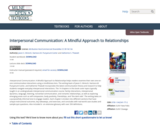
Interpersonal Communication: A Mindful Approach to Relationships helps readers examine their own one-on-one communicative interactions using a mindfulness lens. The writing team of Jason S. Wrench, Narissra M. Punyanunt-Carter, and Katherine Thweatt incorporates the latest communication theory and research to help students navigate everyday interpersonal interactions. The 14 chapters in this book cover topics typically taught in an undergraduate interpersonal communication course: family interactions, interpersonal dynamics, language, listening, nonverbal communication, and romantic relationships, as well as exploring emerging areas such as self-compassion, body positivity, friendships, and “the dark side”. The writing takes on a purposefully informal tone to engage readers. Each chapter is broken into different sections that have unique instructional outcomes, key takeaways, and exercises, and concludes with real-world case studies and sample quiz questions. Also included is an extensive glossary with over 350 definitions.
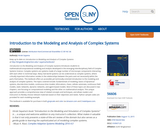
Introduction to the Modeling and Analysis of Complex Systems introduces students to mathematical/computational modeling and analysis developed in the emerging interdisciplinary field of Complex Systems Science. Complex systems are systems made of a large number of microscopic components interacting with each other in nontrivial ways. Many real-world systems can be understood as complex systems, where critically important information resides in the relationships between the parts and not necessarily within the parts themselves. This textbook offers an accessible yet technically-oriented introduction to the modeling and analysis of complex systems. The topics covered include: fundamentals of modeling, basics of dynamical systems, discrete-time models, continuous-time models, bifurcations, chaos, cellular automata, continuous field models, static networks, dynamic networks, and agent-based models. Most of these topics are discussed in two chapters, one focusing on computational modeling and the other on mathematical analysis. This unique approach provides a comprehensive view of related concepts and techniques, and allows readers and instructors to flexibly choose relevant materials based on their objectives and needs. Python sample codes are provided for each modeling example.
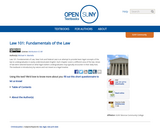
Law 101: Fundamentals of Law, New York and Federal Law is an attempt to provide basic legal concepts of the law to undergraduates in easily understood plain English. Each chapter covers a different area of the law. Areas of law were selected based on what legal matters undergraduates may typically encounter in their daily lives. The textbook is introductory by nature and not meant as a legal treatise.

As a group of organisms that are too small to see and best known for being agents of disease and death, microbes are not always appreciated for the numerous supportive and positive contributions they make to the living world. Designed to support a course in microbiology, Microbiology: A Laboratory Experience permits a glimpse into both the good and the bad in the microscopic world. The laboratory experiences are designed to engage and support student interest in microbiology as a topic, field of study, and career.
This text provides a series of laboratory exercises compatible with a one-semester undergraduate microbiology or bacteriology course with a three- or four-hour lab period that meets once or twice a week. The design of the lab manual conforms to the American Society for Microbiology curriculum guidelines and takes a ground-up approach — beginning with an introduction to biosafety and containment practices and how to work with biological hazards. From there the course moves to basic but essential microscopy skills, aseptic technique and culture methods, and builds to include more advanced lab techniques. The exercises incorporate a semester-long investigative laboratory project designed to promote the sense of discovery and encourage student engagement. The curriculum is rigorous but manageable for a single semester and incorporates best practices in biology education.
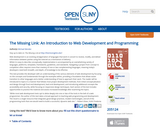
Web development is an evolving amalgamation of languages that work in concert to receive, modify, and deliver information between parties using the Internet as a mechanism of delivery.
While it is easy to describe conceptually, implementation is accompanied by an overwhelming variety of languages, platforms, templates, frameworks, guidelines, and standards. Navigating a project from concept to completion often requires more than mastery of one or two complementing languages, meaning today’s developers need both breadth, and depth, of knowledge to be effective.
This text provides the developer with an understanding of the various elements of web development by focusing on the concepts and fundamentals through the examples within, providing a foundation that allows easier transition to other languages and a better understanding of how to approach their work. The reader will be introduced to topics in a manner that follows most project development methods, from initial conceptualization and design through front end development, back end development, and introducing additional concepts like accessibility and security, while focusing on responsive design techniques. Each section of the text includes opportunities to practice the material and assess increased knowledge after examining the topics.
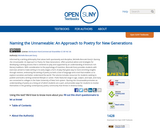
Informed by a writing philosophy that values both spontaneity and discipline, Michelle Bonczek Evory’s Naming the Unnameable: An Approach to Poetry for New Generations offers practical advice and strategies for developing a writing process that is centered on play and supported by an understanding of America’s rich literary traditions. With consideration to the psychology of invention, Bonczek Evory provides students with exercises aimed to make writing in its early stages a form of play that gives way to more enriching insights through revision, embracing the writing of poetry as both a love of language and a tool that enables us to explore ourselves and better understand the world. The volume includes resources for students seeking to publish and build a writing-centered lifestyle or career. Poets featured range in age, subject, and style, and many are connected to colleges in the State University of New York system. Naming the Unnameable promotes an understanding of poetry as a living art of which students are a part, and provides ways for students to involve themselves in the growing contemporary poetry community that thrives in America today.
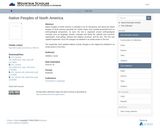
Native Peoples of North America is intended to be an introductory text about the Native peoples of North America (primarily the United States and Canada) presented from an anthropological perspective. As such, the text is organized around anthropological concepts such as language, kinship, marriage and family life, political and economic organization, food getting, spiritual and religious practices, and the arts. Prehistoric, historic and contemporary information is presented. Each chapter begins with an example from the oral tradition that reflects the theme of the chapter. The text includes suggested readings, videos, and classroom activities.